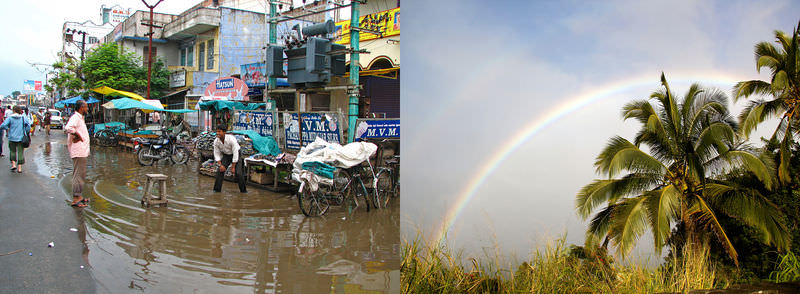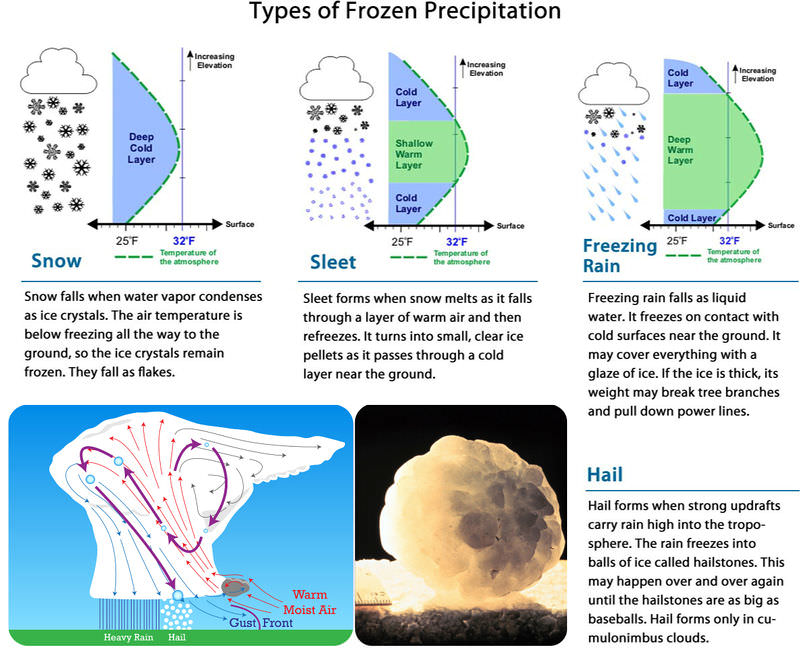11.5: Precipitation
- Page ID
- 5512
Want to stay dry? Don't go to these places!
The wettest locations in the world are in Mawsynram and Cherrapunji in India. Monsoon rains result in more than 460" of rain annually. The wettest place in the United States with 404" on average is on Maui (Big Bog). The wettest place in the continental United States is Langlois, Oregon with a mere 122" per year.
Precipitation
Clouds are needed for precipitation. Precipitation is water that falls from the sky. This may fall as liquid water, mostly as rain. It may fall also as frozen water, such as snow.
Why Precipitation Falls
Millions of water molecules in a cloud must condense to make a single raindrop or snowflake. The drop or flake falls when it becomes too heavy for updrafts to keep it aloft. As a drop or flake falls, it may collect more water and get larger.
Types of Precipitation
Why does it snow instead of rain? Air temperature determines which type of precipitation falls. Rain falls if the air temperature is above freezing (0° C or 32° F). Frozen precipitation falls if the air or ground is below freezing. Frozen precipitation may fall as snow, sleet, or freezing rain. Below, you can see how the different types form (Figure below).
Frozen precipitation may fall as snow, sleet, or freezing rain.
Summary
- Precipitation falls when it gets too heavy to stay in a cloud.
- Rain droplets caught up in air currents within a cloud get larger by the addition of condensed droplets until they are too heavy and they fall.
- If the ground is very cold, rain can freeze to become sleet or glaze.
Review
- Why do raindrops form and fall to the ground?
- Why does hail only come from cumulonimbus clouds?
- How does sleet form?
Explore More
Use the resource below to answer the questions that follow.
- What is precipitation?
- What is the most common form of precipitation?
- What is hail?
- What is sleet?
- What is snow?



